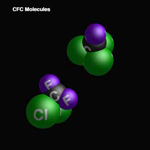
Chemistry-Related Accidents Spur Action
New safety initiatives and a National Academy of Sciences study have come in response to dozens of accidents in recent years at industrial and academic labs.
- By Jerry Laws
- Aug 01, 2013
A National Academy of Sciences committee began a yearlong study this year to examine how to promote safe practices in academic and government laboratories. The 13-member committee, chaired by Dr. H. Holden Thorp, provost and distinguished professor of chemistry and medicine at Washington University in St. Louis, will hold its third meeting this month in Boston and is expected to deliver a report next spring.
The project is funded by the National Science Foundation, the U.S. Department of Energy, the National Institute of Standards and Technology, ExxonMobil Corporation, the American Chemical Society, and DuPont. It stems from a number of chemistry-related lab accidents, including the widely publicized 2009 death of UCLA research assistant Sheri Sangji due to burn injuries she had suffered while working in an organic chemistry lab.
Cal/OSHA cited UCLA in connection with her death, concluding the most significant factor in her injuries was failure to wear a lab coat. The university took numerous actions to strengthen its laboratory safety culture after Sangji's death. It created a new University of California Center for Laboratory Safety (http://cls.ucla.edu/), enacted a new policy requiring PPE for lab personnel working with certain materials, offers much more training to staff and students, and significantly increased both the number and the thoroughness of compliance inspections carried out by the university's Office of Environment, Health and Safety, according to reports published by UCLA Magazine and Chemical & Engineering News, a publication of the American Chemical Society (ACS).
The U.S. Chemical Safety and Hazard Investigation Board investigated a Jan. 7, 2010, explosion that seriously injured a graduate student working in a chemistry lab at Texas Tech University. When the board released its report on the incident in October 2011, its investigators said academic labs needed guidance from OSHA, and the board asked ACS to develop a methodology for evaluating and controlling hazards in these labs.
"The CSB is concerned with laboratory safety because when compared to industry, it's an area that is unregulated and lacks good practice guidance. There is an OSHA laboratory standard requiring universities to create Chemical Hygiene Plans, but it focus is on exposure hazards and health hazards of the research work being conducted. We found that there is no comprehensive guidance for conducting hazard evaluations within the dynamic environment of academic research laboratories," Investigator Cheryl MacKenzie said then.
Lab Safety Resources
OSHA'’s Revised Appendix A to its laboratory standard, 29 CFR 1910.1450, does list six "general principles" that form a foundation for ensuring laboratory safety. It is a non-mandatory document titled National Research Council Recommendations Concerning Chemical Hygiene in Laboratories, available as a link on the agency's safety and health topics page for lab safety (http://www.osha.gov/SLTC/laboratories/index.html). The appendix can assist employers in developing an appropriate laboratory Chemical Hygiene Plan, and its Section F contains recommendations from the CSB investigation of the Texas Tech explosion.
The six principles are:
Minimize all chemical exposures and risks
Avoid underestimation of risk
Adhere to the Hierarchy of Controls
Provide laboratory ventilation
Institute a Chemical Hygiene Program
Observe the PELs and TLVs
The document recommends minimizing exposures even for substances of no known significant hazard and taking special precautions when working with substances that present special hazards. "Unless otherwise known, one should assume that any mixture will be more toxic than its most toxic component and that all substances of unknown toxicity are toxic," it states. In addition, before any work is done with chemicals, researchers must know their facility's policies and procedures for how to handle an accidental spill or fire, as well as the location of all safety equipment and the nearest fire alarm and telephone.
"Laboratory personnel must realize that the welfare and safety of each individual depends on clearly defined attitudes of teamwork and personal responsibility. Learning to participate in this culture of habitual risk assessment, experiment planning, and consideration of worst-case possibilities -- for oneself and one’s fellow workers -- is as much part of a scientific education as learning the theoretical background of experiments or the step-by-step protocols for doing them in a professional manner. A crucial component of chemical education for all personnel is to nurture basic attitudes and habits of prudent behavior so that safety is a valued and inseparable part of all laboratory activities throughout their career," the appendix states.
Another resource is www.LabSafetyWorkspace.org, an online laboratory safety training hub launched by the New Hampshire IDeA Network of Biomedical Research Excellence (NH-INBRE), Dartmouth College Environmental Health & Safety, and BioRAFT. It was funded as part of a $15.4 million award in 2010 from the National Institutes of Health supporting biomedical research by faculty and students throughout New Hampshire. Introductory safety courses housed there are available to researchers everywhere, however.
And the Dow Lab Safety Academy, http://safety.dow.com/, was launched this year. It is a digital learning academy with modules based on practices that have been used successfully at the company. They're grouped into four categories (Safety Orientation & Training; Specialized Topics; Plan, Evaluate & Execute; and Sustainable Safety Culture) and cover everything from reactive chemicals and understanding safety data sheet information to pyrophorics, nanomaterials, biological hazards, ergonomics, slip and fall prevention, using a fire extinguisher, and lone worker safety.